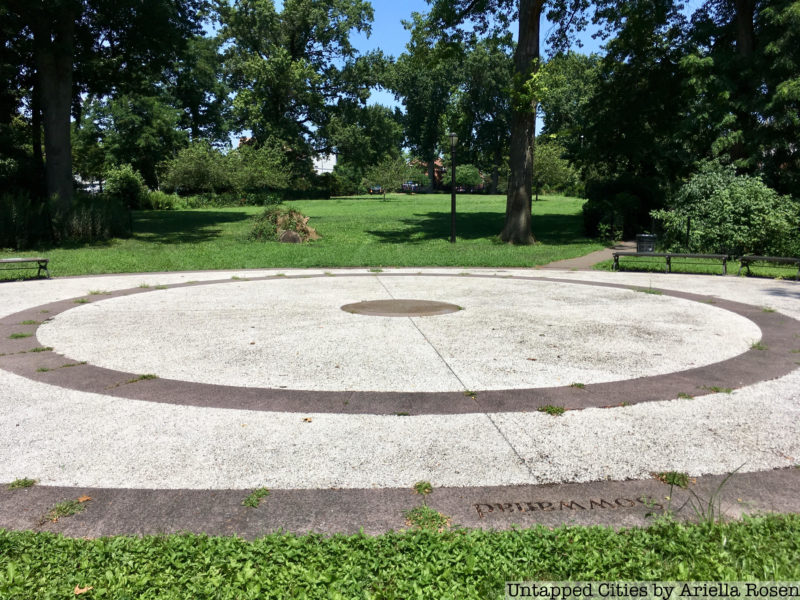6. Olde Towne of Flushing Burial Ground (1840)

The Olde Towne of Flushing Burial Ground is a small burial ground alternatively known as the “Colored Cemetery of Flushing.” A large circular monument notes the burial of 500 to 1,000 people, primarily African Americans, Native Americans, and victims of four major epidemics of cholera and smallpox in the mid-1800s. Acquired by the town of Flushing in 1840 from the Bowne family, the burial ground contains the bodies of slaves and servants of the Flushing elite, as well as members of the African Methodist Episcopal Church. Death certificates issued in the 1880s confirm that more than half of the buried were children under the age of five. About 62 percent of the buried were African American or Native American.
In 1936, Parks Commissioner Robert Moses decided to build a modern playground on the site of the burial ground. Local activist Mandingo Tshaka halted plans of renovating the cemetery to preserve its history. The Queens Department of Parks commissioned a $50,000 archaeological study in 1996 of the burial ground. In 2004, $2.67 million was allocated to this site, leading to the creation of a historic wall engraved with the names from the only four headstones remaining in 1919.





